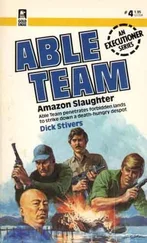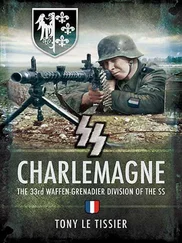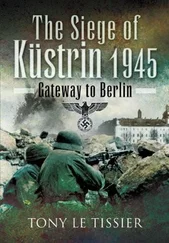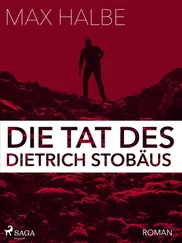The results were simply incredible chaos: hassle, no sleep, no supplies, contaminated drinking water, unbelievable casualties, the encirclement constantly closing in, ferocious enemy air attacks, and massive artillery bombardment. During this phase there was a visible sinking of morale in my own unit. The chief of staff, Major Renner, had already fled. Unit leaders took control. The generals were no longer exercising their authority. [17] Brand, in the author’s Death Was Our Companion . Ketsin is not identified on maps of this area, but this could be a misspelling of Ketzin, north-west of Potsdam, where the Soviet encirclement of Berlin was completed on 25 April.
The battles on the pocket perimeter that followed saw the deaths of thousands and were a nightmare for the survivors. Small groups of armoured vehicles with escorting infantry, such as the remains of 502nd SS Heavy Panzer and 10th SS Armoured Reconnaissance Battalions, were to play a prominent part in the Storkow–Bad Saarow area. There was no continuous front and fighting was taking place everywhere, though the intention was to conduct an orderly withdrawal from one line to another. Counterattacks brought temporary success, checking but not stopping the Soviet advance. Soviet penetrations in the flanks and rear could not be prevented.
Heinz Deerberg, then a twelve-year-old boy, reported on his experiences:
We were fleeing (to nowhere in particular) in a small group with all our vital belongings in a handcart along a woodland track, presumably near Prieros. Crouching down on both sides of the track were German soldiers without badges of rank or the eagle and swastika emblem, and armed with Soviet drum-magazine submachine guns, clearly Seydlitz people setting a trap for German soldiers. Several hundred metres further on were the first Russians. A young soldier, or officer, mounted on a horse, was looking around, spying out the land and relieving the refugees of their valuables and watches. [18] Schulze, Der Kessel Halbe–Baruth–Radeland , pp. 18, 20.
The complete air superiority of the Soviets and other factors made conditions for the German troops even worse. Organized convoys and units became entangled with leaderless groups of soldiers on foot; refugee groups with their horse-drawn carts and handcarts, and wounded in all kinds of vehicles were all making their way westwards on the country roads and woodland tracks of the Spreewald. The 16th Air Army alone flew 2,000 sorties on 24 April. Tanks and SPGs were knocked out, ammunition trucks blown up, and whole groups of people killed or wounded by direct hits, as well as many military and privately owned horses. [19] Lakowski/Stich, Der Kessel von Halbe 1945 , p. 60.
Because of the constant Soviet pressure and the little or complete lack of reconnaissance by the Germans, most sectors and assembly areas remained ignorant of what was going on around them. Even 9th Army HQ lacked a proper overview.
At the end of 24 April the OKW summarized:
In the difficult, wide-reaching redeployment of the 9th Army, the enemy is thrusting with strong encircling attacks from the east and north, making it hard to release forces for the break-out to the west.
Deep breaches west of Fürstenwalde and the lateral movement of LVI Panzer Corps to the Teltow Canal have led to a further worsening of the situation for 9th Army. The supply situation for infantry and anti-tank ammunition is exceptionally tense.
There are overwhelming attacks to the west by the enemy on 9th Army from a bridgehead west of Fürstenwalde. Göllmitz, the Langedamm forest warden’s lodge and Rauen have been lost. An enemy thrust south has been checked on the northern edge of Kolpin. [20] Ibid ., p. 60 [citing Federal Military Archives RH 19 XV/10, Sheet 332].
SEVEN
No Luck for von Luck
25 APRIL 1945
This was the day of the historic link-up of the Soviets and the Americans on the Elbe, when 5th Guards Army’s 58th Guards Rifle Division encountered patrols from 69th US Infantry Division of 1st US Army near Torgau. All that remained of the Third Reich was thus split horizontally in two. Another significant development that day occurred when troops of both Soviet fronts completed the encirclement of Berlin, meeting north-east of Potsdam. Now there were two encirclements for them to deal with, the ‘Berlin Group’ and the ‘Frankfurt–Guben Group’, as they called them. [1] GPW, p. 382; Koniev, Year of Victory , p. 172; Toland, The Last Hundred Days , p. 451.
Meanwhile Marshal Koniev had the three armoured corps of 3rd Guards Tank Army with their infantry and artillery reinforcements advancing steadily through the southern suburbs of the city aimed directly at the Reichstag, detaching only 55th Guards Tank Brigade to cover the exposed left flank through the Grunewald Forest and move on into the Olympic Stadium area of Charlottenburg. However, there were problems, as he related:
In street fighting it is generally hard for aircraft to operate with any degree of precision. Everything is in ruins and is shrouded in flame, smoke and dust. From the air it is generally difficult to make out anything at all.
From Rybalko’s reports I understood that there were instances when he was suffering losses inflicted by our own air force. It was not easy to ascertain which front’s aircraft were bombing our own troops in the turmoil of the street fighting.
It is always a bitter shock when, by some mischance, one is suddenly hit by one’s own people and suffers losses. It was especially painful during the fighting for Berlin, since reports of this kind kept coming in all day, apparently not only to me, but also to Zhukov.
The commands of both fronts applied to GHQ to clear up the problems of troop coordination so that unnecessary argument could be avoided.
The GHQ directive established a new boundary running through Mittenwalde, Mariendorf, Tempelhof and the Potsdamer Railway Terminal. All these points, as the military documents put it, were inclusive for the 1st Ukrainian Front.
That was in the evening. By the time the line of demarcation had been established a whole corps of Rybalko’s army was far beyond it in a zone which was now under the jurisdiction of the 1st Byelorussian Front. This corps had to be withdrawn from the centre of Berlin and deployed outside the new line of demarcation. But this was easier said than done. Anybody who fought in that war will understand how hard it was psychologically for Rybalko to withdraw his tankmen back inside the line of demarcation. [2] Koniev, Year of Victory , pp. 171–2.
It is interesting to note that the fronts had to apply to GHQ to sort out this problem, being incapable of doing so themselves, the hostility between the two commanders being too great. However, the change of inter-front boundary still left the Reichstag within Koniev’s reach, as a subtended line from this boundary shows, there being no designated end line across the front of the troops advancing from any direction.
In the early hours of the morning 13th Army’s reserve corps suffered a severe rebuff from the Friedrich Ludwig Jahn Infantry Division when it tried to regain Wittenberg. The Soviet infantry had been hastily trucked forward from Jüterbog without armoured support and were just leaving their forming-up areas when the German troops ran into them while expanding their own perimeter. In this surprise encounter the Germans came off best, driving the Soviets back ten kilometres by midday. The fighting continued all day. The Soviets brought up some T-34 tanks and tried to force their way in along the various streets leading into the town, but the German flak gunners formed a ‘hedgehog’ and used their 88-mm guns in the anti-tank role to hold them at bay. The German division then received orders to disengage and to move to Jeserigerhütten, where it was to prepare to attack eastwards. This was achieved by launching a series of sharp counterattacks before withdrawing. [3] Gellermann, Die Armee Wenck , p. 79.
Читать дальше












